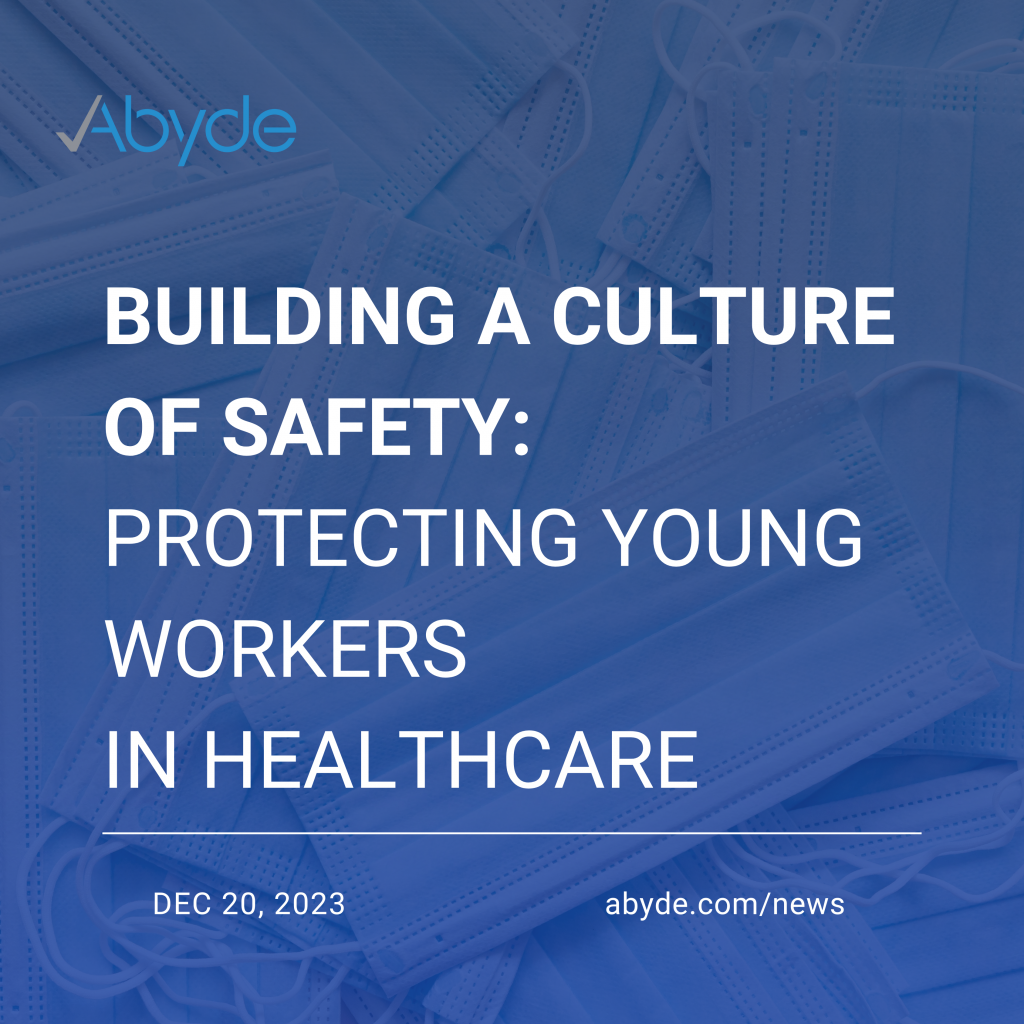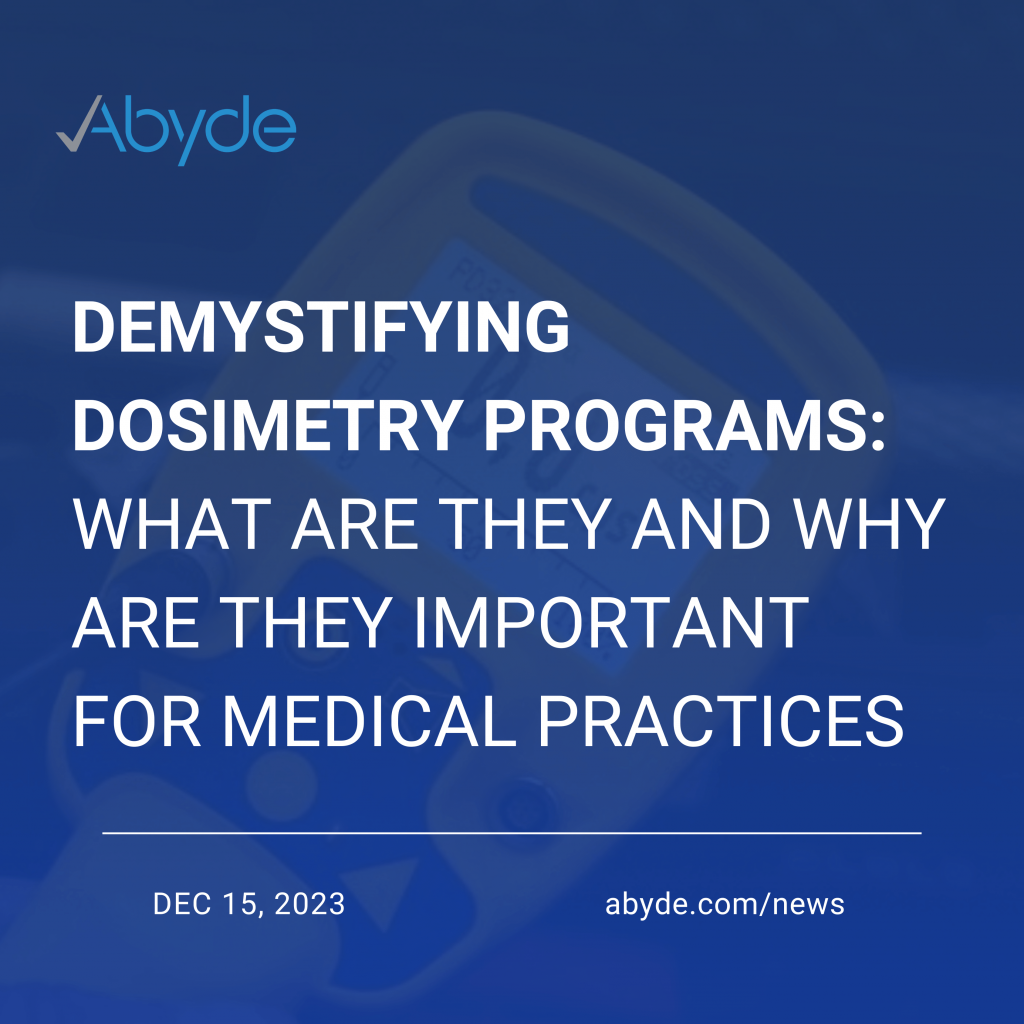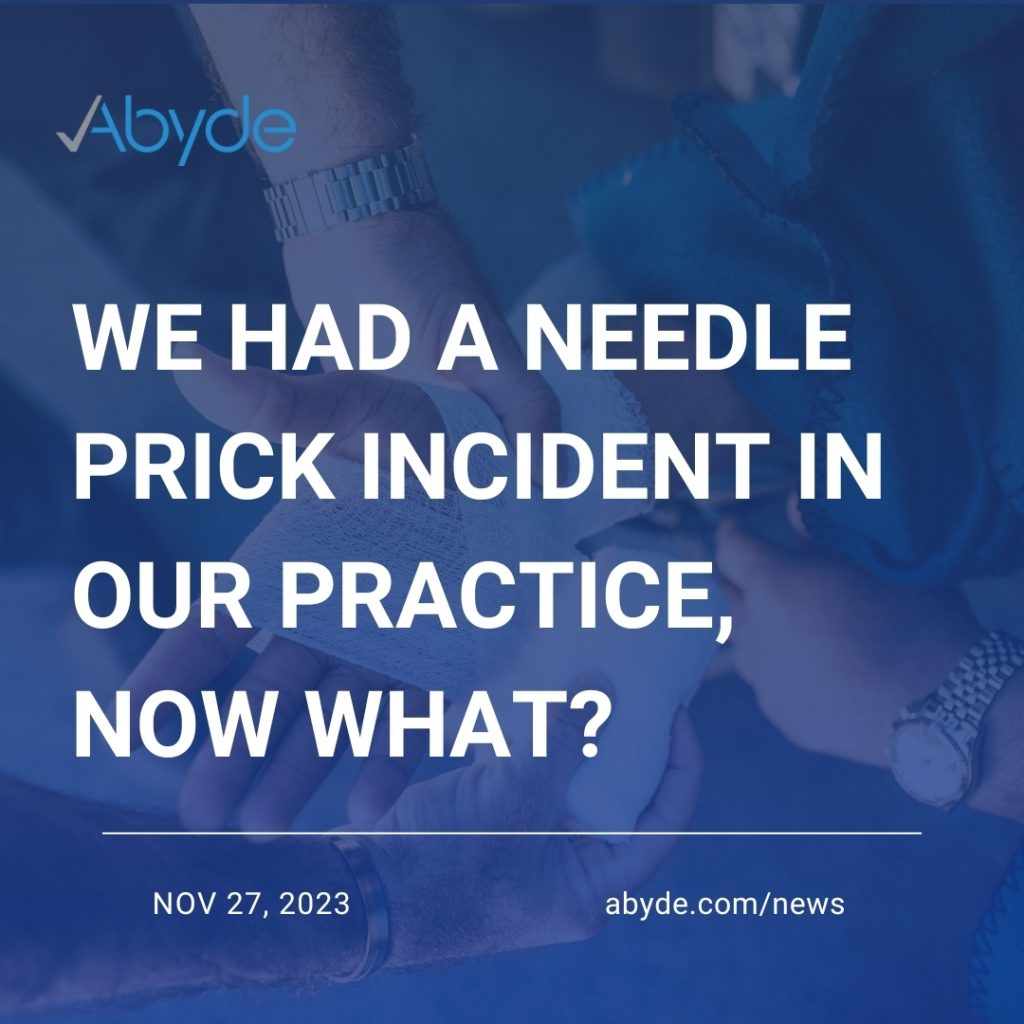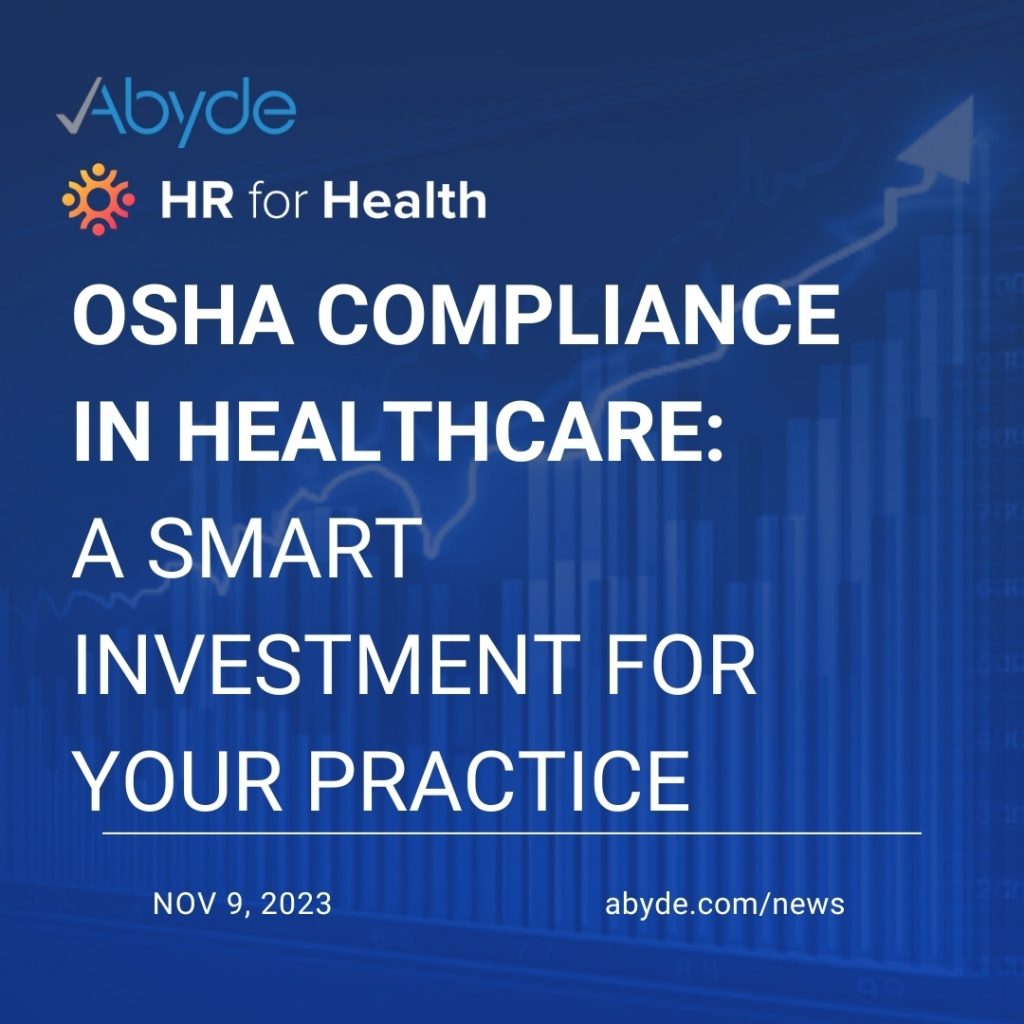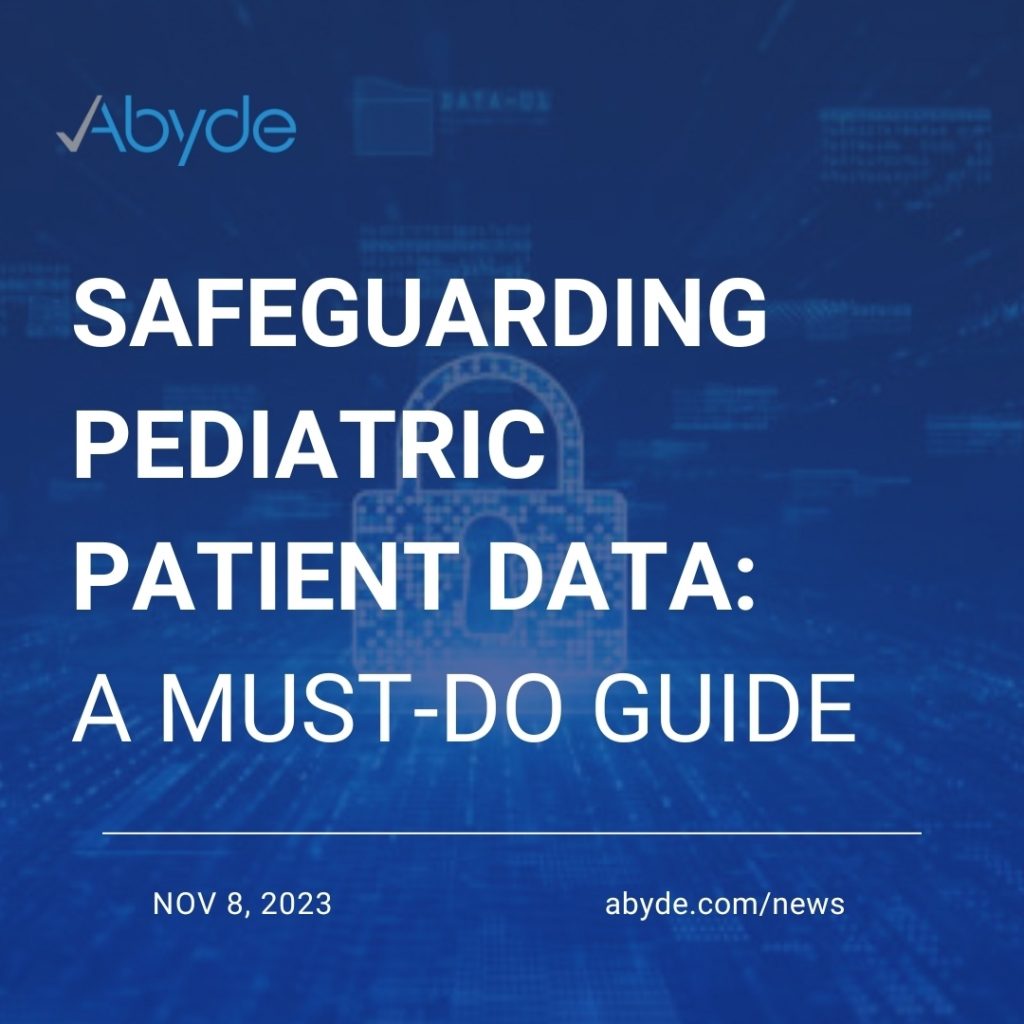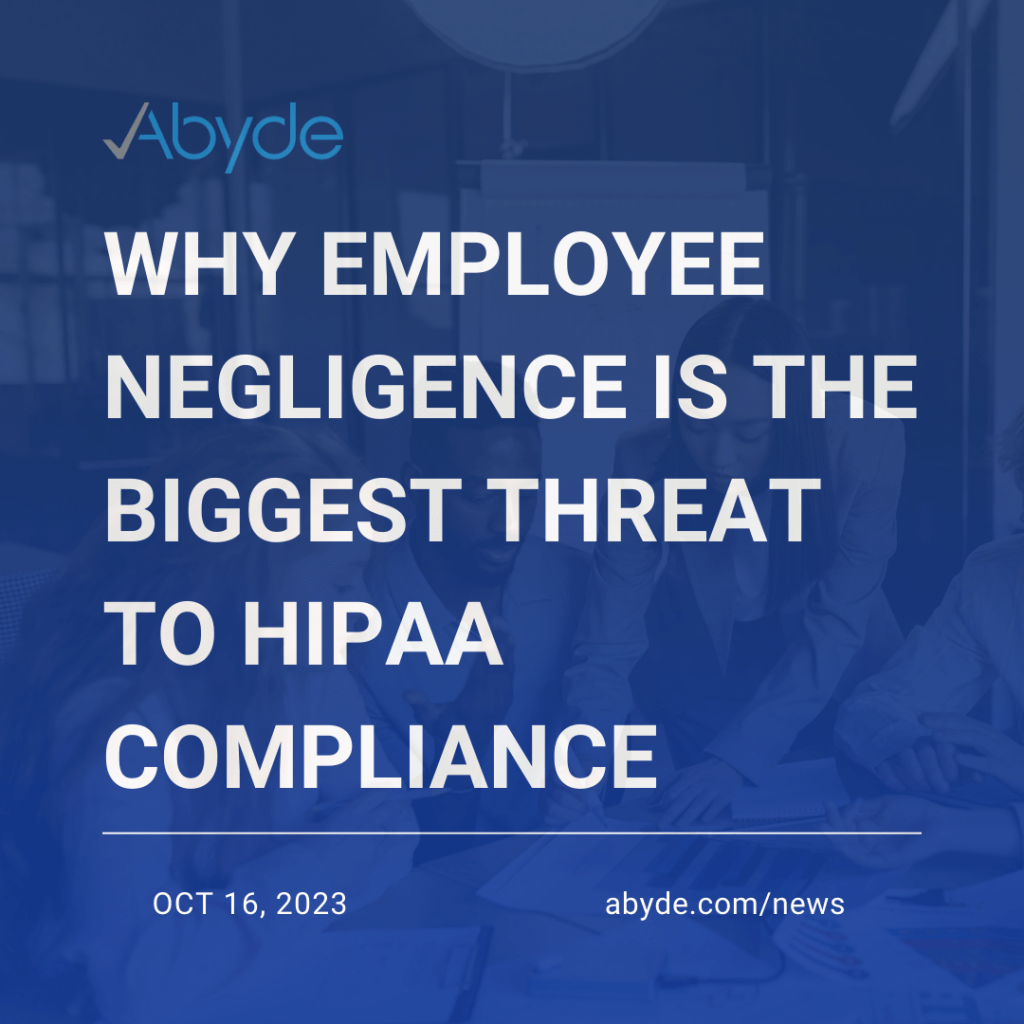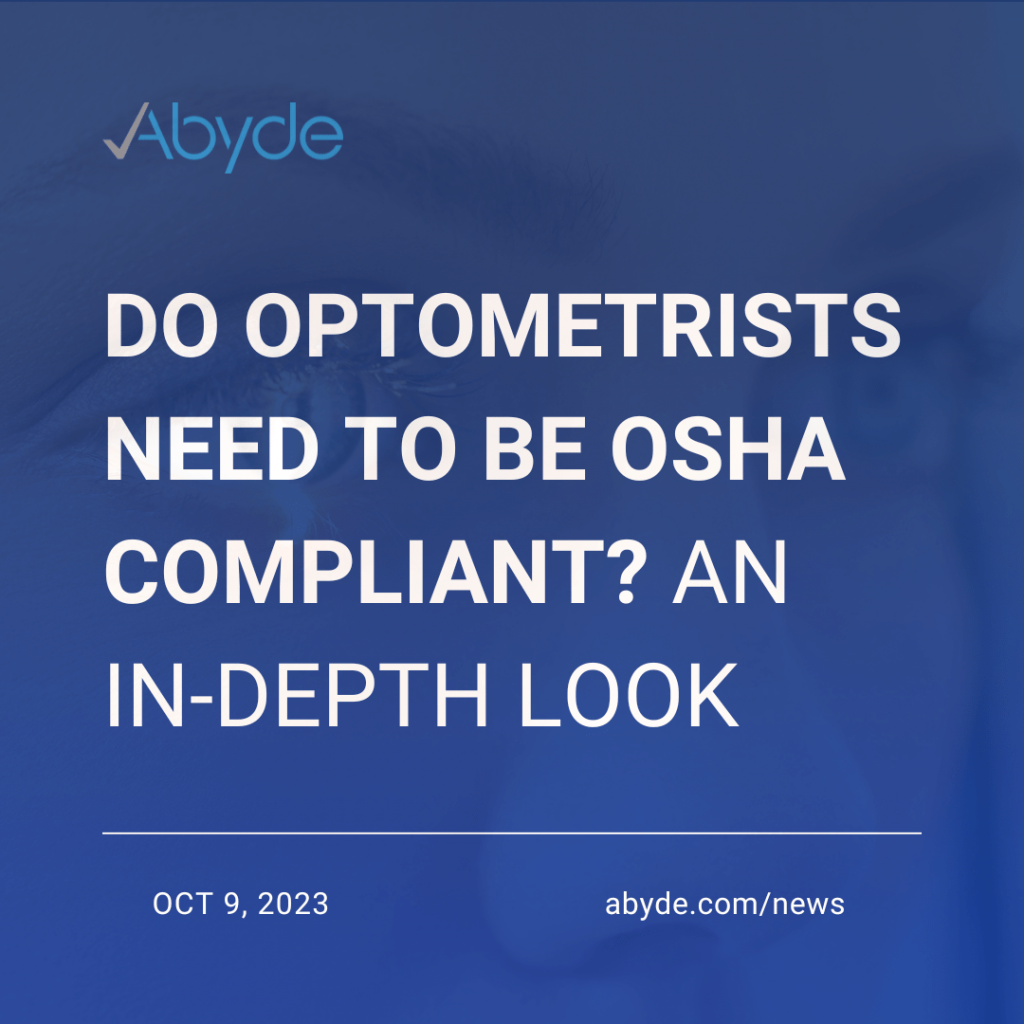December 20, 2023 Protecting patients and our young workforce is a shared responsibility. At Abyde, we’re committed to safety, both for patients and for the dedicated individuals who keep our healthcare systems running. That’s why the recent tragedy at Florence Hardwoods sawmill in Wisconsin hit us hard. A 16-year-old worker, tragically, lost his life due to operating dangerous machinery without proper training. This heartbreaking incident underscores a crucial point: age restrictions matter when it comes to workplace safety, especially when dangerous equipment is involved. The U.S. Department of Labor’s investigation revealed Florence Hardwoods failed to train both teenage and adult workers in safety procedures, exposing them to avoidable hazards. This blatant disregard for regulations and basic human safety is unacceptable. As Abyde, we stand firmly against the use of underage workers for tasks that put them or others at risk. Why is this so important? What can we do? The tragedy at Florence Hardwoods serves as a stark reminder that workplace safety isn’t just about following regulations; it’s about protecting lives. At Abyde, we urge all healthcare institutions, to re-evaluate their safety protocols and ensure that age-appropriate restrictions are in place to protect young workers from harm. It’s time to say “no more” to child’s play with dangerous medical equipment. Let’s create a safer future for everyone in the healthcare workplace. Together, we can prevent future tragedies and ensure that every healthcare worker, regardless of age, returns home safe and sound every day. Additional Resources
Demystifying Dosimetry Programs: What are they and why are they important for Medical Practices?
December 15, 2023 In the realm of medical practices, ensuring the safety and well-being of both patients and staff is paramount. As part of this commitment, understanding and implementing regulatory compliance measures is crucial. One such essential aspect is the Dosimetry Program, a structured system designed to monitor and assess occupational exposure to ionizing radiation. In this blog, we’ll delve into what Dosimetry Programs are, why they are vital for medical practices, and how Abyde simplifies compliance. What is a Dosimetry Program? A Dosimetry Program is a comprehensive framework aimed at monitoring and evaluating occupational exposure to ionizing radiation, a common concern in medical practices where diagnostic imaging and radiation therapy are routine. This program ensures that healthcare professionals, including radiologic technologists and other personnel, are not exposed to excessive levels of radiation during the course of their duties. Why are Dosimetry Programs Important for Medical Practices? How Abyde Helps Medical Practices Implement Dosimetry Programs Implementing and managing Dosimetry Programs can be intricate, but Abyde streamlines the process by providing: In conclusion, Dosimetry Programs are not just regulatory obligations for medical practices; they are integral to ensuring the safety of both staff and patients. Abyde’s OSHA solutions empower medical practices to streamline compliance efforts, prioritize employee safety, and build a robust foundation for a culture of patient-centered care. Stay compliant, stay secure, and stay Abyde. Reach out today to speak to one of our compliance experts! Call 800.594.0883 or email us at info@abyde.com!
The Top Three Steps to Remain OSHA and HIPAA Compliant when Hiring New Employees
November 30, 2023 In the fast-paced realm of healthcare, where patient confidentiality and workplace safety are paramount, hiring new staff demands meticulous attention to HIPAA and OSHA compliance. From the moment a new employee steps through the door, it’s crucial to instill a culture of compliance. Here’s a breakdown of the top three steps a medical practice should take during the onboarding process to ensure their team members are well-versed in compliance. 1. Training: The Foundation of Compliance Training is the bedrock of a compliant workforce. Before the employee even starts to perform job duties, invest time and resources in comprehensive training sessions that focus on both HIPAA and OSHA regulations. Abyde’s employee training portal can guide the creation of tailored training materials, ensuring that employees receive relevant, up-to-date information. Ensure that the training covers the nuances of patient privacy, proper handling of medical records, and the essential safety protocols mandated by OSHA. This also includes making sure employees who work with specialized equipment like X-ray machines, MRIs and lasers are trained specifically on each device. Regular updates and refresher courses can be facilitated through Abyde’s user-friendly employee portal, maintaining a continuous learning environment. 2. Confidentiality Agreements: Protecting Patient Privacy Securing patient information is at the core of HIPAA compliance. Implementing confidentiality agreements is a vital step in ensuring that new hires understand the gravity of safeguarding sensitive data. Clearly outline expectations regarding the handling of patient records, communication protocols, and consequences for breaches. Abyde can assist in streamlining this process by providing dynamically generated confidentiality agreements. Once signed, these agreements should be securely stored and easily accessible for future reference, ensuring that both parties are held accountable. 3. Access to Policies and Procedures: Empowering Informed Decision-Making Granting new employees easy access to your organization’s policies and procedures is essential for fostering informed decision-making. Abyde’s platform facilitates seamless accessibility, allowing employees to review and familiarize themselves with compliance guidelines at their own pace. This access is not only crucial during the onboarding process but should be an ongoing resource. Regular updates to policies and procedures can be effortlessly communicated through Abyde’s platform, ensuring that your team remains aligned with the latest compliance standards. In conclusion, successfully onboarding a new employee in a medical practice requires a strategic approach to compliance. By prioritizing training, confidentiality agreements, and access to policies and procedures, organizations can create a robust foundation for a compliant and secure workplace. Abyde’s innovative solutions streamline these processes, empowering medical practices to navigate the complexities of HIPAA and OSHA compliance with confidence.Interested in seeing the Abyde solution in action? Click here to schedule a demo or call us at 1800-594-0883.
We Had a Needle Prick Incident in Our Practice, Now What?
November 27, 2023 Accidents happen, and in a medical setting, a needle prick can be a cause for concern. As a responsible healthcare provider, it’s crucial to have a clear protocol in place for your team to follow when such incidents occur. In this guide, we’ll walk you through the top four things your medical practice must do after a needle prick to ensure the well-being of your staff and maintain compliance. 1. Provide First Aid to the Employee If Needed: The safety and well-being of your staff are paramount. In the event of a needle prick, provide immediate first aid to the affected employee. Ensure that basic first aid supplies are readily available, and educate your team on the proper procedures to address minor injuries. Quick and appropriate action can significantly reduce the risk of complications. 2. Recommend the Employee Seek Medical Attention: While first aid is a crucial initial step, it’s essential to recommend that the affected employee seek professional medical attention promptly. Urgent care facilities or other medical providers can conduct a thorough assessment of the situation and determine if further medical interventions, such as post-exposure prophylaxis (PEP), are necessary. Prompt medical attention is vital for minimizing potential health risks. 3. Ask the Source Patient for Consent to Test Their Blood: One of the critical steps after a needle prick is to assess the risk of bloodborne pathogens. Seeking consent from the source patient for blood testing is a crucial component of this assessment. Utilize the Accidental Exposure Testing Consent Form provided by Abyde to ensure that the process is well-documented and compliant. This form not only demonstrates your commitment to employee health but also facilitates a transparent and legally sound approach to managing potential exposures. 4. Log Incident within Abyde: To maintain a comprehensive record of the incident and demonstrate compliance with industry standards, it’s imperative to log the needle prick incident within Abyde. Abyde’s robust compliance solutions are designed to streamline documentation processes and ensure that all necessary details are recorded accurately. By logging the incident promptly, you create a valuable resource for future reference, audits, and continuous improvement of your workplace safety protocols. Conclusion: Prioritizing Safety and Compliance Handling a needle prick incident promptly and responsibly is crucial for the safety of your staff and the integrity of your medical practice. By providing immediate first aid, recommending professional medical attention, seeking consent for blood testing, and logging the incident within Abyde, you establish a robust framework for managing such situations. Abyde’s commitment to simplifying compliance processes ensures that your medical practice can navigate post-needle prick protocols seamlessly. Remember, proactive measures today contribute to a safer and more compliant healthcare environment tomorrow. Not yet using Abyde? Click here to schedule a one-on-one consultation with a compliance expert!
OSHA Compliance in Healthcare: A Smart Investment for Your Practice
November 9, 2023 The following blog was co-written with Abyde’s HR partner, HR for Health. If you would like more information on HR for Health, please click here to visit their website. As a practice owner or healthcare employer, it is essential to prioritize the safety and well-being of your employees. One effective way to achieve this is by providing your team with proper Occupational Safety and Health Administration (OSHA) training. However, the cost of such training may deter some employers from investing in it. HR for Health team’s up with compliance partner Abyde to explore the nuances of OSHA training and the benefits of compensating your employees for their time spent training. OSHA in Healthcare: Navigating the Compliance Maze OSHA is a federal agency that’s all about keeping workplaces safe and healthy. In the healthcare world, this translates to ensuring the safety of both employees and patients. OSHA sets the rules, regulations, and guidelines that healthcare providers must follow to maintain a safe working environment. Requirements for Healthcare Providers Healthcare providers must adhere to OSHA regulations to ensure the well-being of everyone in the facility. This involves a multitude of requirements, from infection control to safe handling of hazardous materials, to reducing workplace violence. Compliance with OSHA standards is not just a box to tick; it’s about safeguarding the lives and health of patients and employees. The Crucial Connection to Employee Training and Retention Now, here’s where it gets interesting. Effective training and compliance with OSHA regulations play a pivotal role in employee training and retention. When healthcare providers prioritize OSHA training, they signal a commitment to employee well-being. This commitment, in turn, results in a happier, healthier, and more loyal workforce. Investing in comprehensive OSHA training demonstrates that you value your employees’ safety. This not only creates a positive work culture but also significantly impacts employee retention. Employees who feel secure and well-cared for are more likely to stay with your healthcare practice, reducing turnover rates and the costly process of recruiting and training new staff. Additionally, by equipping your employees with the necessary knowledge and skills to work safely, you can significantly reduce the risk of incidents occurring on the job. Consequently, this can save your company money in the long run, as workplace accidents lead to expensive workers’ compensation claims and lost productivity. The Legal Perspective According to HR for Health, compensating employees for OSHA training is not only a wise business decision but may also be required by law. Under the Fair Labor Standards Act (FLSA), employers must pay employees for their time spent in training directly related to their job duties. Therefore, if you require employees to complete OSHA training as part of their responsibilities, you must compensate them for the time spent in training. On the flip side… Employers may choose to provide a different rate of pay for training, but it’s left up to employers to decide if their training falls under certain criteria to provide a different rate of pay versus their regular rate of pay. These are the criteria points that must be met: It is imperative that you clearly outline the alternate rate of pay in your employee handbook, which cannot be less than minimum wage. How Abyde Keeps You Compliant Abyde, a provider of HIPAA compliance solutions, emphasizes the importance of OSHA training for healthcare organizations. In addition to reducing the risk of workplace accidents, OSHA training helps healthcare providers comply with HIPAA regulations. By ensuring that employees are trained on proper handling and disposal of hazardous materials, healthcare organizations can avoid costly fines and penalties for non-compliance. Abyde’s key features include: For more information on Abyde and how they work with your healthcare practice, please visit abyde. Track Employee Training with HR for Health HR for Health is a comprehensive human resources platform designed specifically for healthcare professionals. Key training tracking features include: In conclusion, compensating employees for OSHA training is a wise investment for employers who prioritize the safety and well-being of their team members. Not only does it help prevent workplace accidents and injuries, but it also boosts employee morale and job satisfaction. As HR for Health and Abyde suggest, employers should be aware of their legal obligations and take steps to ensure that employees are properly compensated for their time spent in training.
Safeguarding Pediatric Patient Data: A Must-Do Guide
November 8, 2023 Imagine a bustling pediatric practice, filled with the laughter of kids. In this lively setting, protecting patient data may not be the first thing on your mind, but it’s as important as ensuring those precious smiles! At Abyde, we’re all about ensuring the well-being of your little patients, and that begins with safeguarding their data. Let’s explore why this is crucial and how compliance and security play a vital role in keeping patient information safe. Why is Pediatric Patient Data So Important? The health records of children are a treasure trove of essential information, from vaccination records to allergies and growth charts. But medical data isn’t the only data that’s valuable – you’re also talking names, dates of birth, addresses and potentially social security numbers. Securing this data is vital to guarantee a healthy future for your young patients. The Compliance Connection So, what’s compliance? Think of it as your guide to data security. Compliance means adhering to rules and regulations, ensuring patient data remains secure. HIPAA (Health Insurance Portability and Accountability Act) is one of these essential rules, setting the standards for protecting sensitive health information. The Role of Security Security acts as the guardian of patient data. It encompasses measures like secure passwords, firewalls, and encryption, shielding data against breaches and unauthorized access. However, there’s a crucial component: proper documentation. Without it, your security measures are like having a shield but no strategy. Documented policies and procedures are your roadmap for keeping data safe, outlining how data is accessed, stored, and shared. It’s More Than Just Locks and Keys Data security isn’t just about digital locks; it’s also about your staff’s training to protect this treasure. Training ensures that they handle patient data responsibly, whether it’s on paper or in a computer. Equally important is your ability to prove that you’re doing everything right. Regular audits and monitoring help you ensure that your data is well-protected. In Conclusion The secret to protecting pediatric patient data involves a blend of compliance, security, documented policies, and well-trained staff. When you get this recipe right, you become a healthcare hero in the pediatric world. Remember, every effort you invest in safeguarding patient data ensures more smiles on those adorable faces. And there’s no better way to implement and sustain mandatory compliance programs than with Abyde—the industry’s easiest and most comprehensive software. With Abyde, you’ll effortlessly manage your compliance needs and keep those little smiles sparkling and secure!
Prioritizing Mental Health in the Workplace: A Guide to OSHA Resources and Best Practices
October 23, 2023 The modern workplace can often be a breeding ground for stress, anxiety, and other mental health concerns. In fact, 80% of employees experience some form of stress at work. Mental well-being can take a backseat as employers and workers grapple with deadlines, interpersonal conflicts, and work-life balance. However, it’s essential to prioritize mental health for overall productivity and harmony within an organization. Abyde, a leader in HIPAA and OSHA compliance solutions, aims to shed light on the importance of this topic and the valuable resources provided by the Occupational Safety and Health Administration (OSHA) to help organizations build a healthier work environment. The Importance of Mental Health Awareness Talking openly about mental health is the first step toward reducing the stigma surrounding it. Employers, unions, and worker organizations have a vital role to play in this discourse. From educational initiatives to supportive policies, these bodies should invest in strategies that focus on: OSHA Resources to Support Workplace Mental Health Support One Another Toolkit This toolkit provides comprehensive guidelines for creating a workplace culture encourages mental health discussions. Available in both English and Spanish, it is an excellent resource for initiating dialogues around mental well-being. Working Together Poster A handy resource for employers and workers alike, this poster outlines the essential steps to address workplace stress and mental health issues effectively. Supporting Your Co-Workers Poster Compassion and understanding are essential when talking about mental health. This poster offers concrete tips on approaching such sensitive topics respectfully, listening empathetically, and providing meaningful support to co-workers. Worker-Fatigue Webpage Worker fatigue is often a precursor to more serious mental health concerns. OSHA’s dedicated webpage on this issue includes information on the impact of demanding work schedules and offers recommendations for preventing fatigue-related injuries and illnesses. Helping Your Co-Workers and Yourself Poster Focusing on mutual support, this poster provides general tips and advice for employers and employees to help each other cope with stress and mental health challenges. Building an Awareness Campaign The resources mentioned above can serve as building blocks for an effective mental health awareness campaign within your organization. OSHA also has written a guide for managers discussing mental health challenges with their employees. Employers can customize these resources to suit their specific workplace environment and challenges. Final Thought Promoting mental health in the workplace is a collective responsibility requiring concerted efforts from employers, workers, and organizations. Utilizing the resources provided by OSHA can help lay a strong foundation for a mentally healthy work environment. Integrating these OSHA resources into your workplace policies and practices ensures a healthier, more productive team and remains compliant with safety and health standards, a win-win situation for all. For more information on how to make your workplace OSHA-compliant and employee-friendly, visit Abyde. We offer comprehensive solutions that effortlessly ensure you meet all health and safety standards.
Why Employee Negligence is the Biggest Threat to HIPAA Compliance
October 16, 2023 Welcome to another edition of Abyde’s insights into the complex world of healthcare compliance. As HIPAA and OSHA compliance experts, we understand the numerous challenges healthcare providers face. Today, we’ll delve into a topic that doesn’t receive as much attention as it should: the role of employee negligence in undermining HIPAA compliance. While advanced cybersecurity measures and secure data storage are essential, human error remains the most significant threat to your organization’s HIPAA compliance. The Human Factor Employees are your front-line defense against breaches and violations. Whether it’s mishandling patient records, failing to encrypt sensitive data correctly, or clicking on phishing emails, the human element poses a unique set of challenges. According to a report by Cybersecurity Insiders, over 60% of organizations identify employee negligence as the most significant risk factor. Common Types of Negligence Inadequate Training Lack of proper training on HIPAA regulations and protocols is often the root cause of negligence. A well-trained workforce is crucial to minimizing errors. Poor Password Management Employees often use weak passwords or reuse passwords across platforms. The implementation of strong password protocols can prevent unauthorized access. Sharing Information One of the most common types of employee negligence is sharing sensitive patient data, whether intentionally or unintentionally. The HIPAA Privacy Rule clearly outlines the guidelines for sharing Protected Health Information (PHI). Consequences of Negligence Financial Penalties Failing to comply with HIPAA can result in hefty fines, ranging from $100 to $50,000 per violation, according to the U.S. Department of Health & Human Services. Legal Repercussions Depending on the severity of the violation, legal action may be taken against the healthcare provider, leading to a damaged reputation and loss of trust. Data Breaches Negligence can lead to data breaches that may require public disclosure, further eroding patient trust and damaging your reputation. Mitigating the Risk Comprehensive Training Programs Regular and rigorous training can significantly reduce instances of employee negligence. Abyde’s HIPAA training solutions can offer a robust program designed to keep your staff informed and compliant. Technology Solutions Leverage technology to minimize the impact of human error. Software solutions like Abyde can provide real-time monitoring and alerts for any compliance issues. Regular Audits Frequent internal audits can identify potential areas of concern before they become major issues. For more on how to perform these audits, check out our resources section here. Final Thought While external threats are a concern, the biggest threat to HIPAA compliance often comes from within. By focusing on comprehensive training and leveraging technology, you can mitigate the risks posed by employee negligence. Trust Abyde to provide you with the tools and expertise to ensure that your organization remains compliant and secure. Contact us today for more information on how Abyde can assist with your HIPAA compliance needs.
Attesting to MIPS? Don’t forget about the Security Risk Analysis
October 11, 2023 It’s your practice’s responsibility to get the SRA done, not your EHR The Merit-Based Incentive Payment System (MIPS) is a Medicare program that rewards eligible clinicians and groups for providing high-quality, cost-effective care. MIPS is a value-based payment program, which means that it ties payments to performance on quality measures, promoting interoperability, improvement activities, and cost. Eye care practices are eligible to participate in MIPS, and they can earn financial incentives for performing well on the program’s measures. One of the most important measures in MIPS is the Security Risk Analysis (SRA). The SRA is a process that helps eye care practices identify and mitigate security risks to their patients’ protected health information (PHI). The SRA must be conducted annually, and MIPS-eligible clinicians must attest to completing an SRA in order to receive a score for the Promoting Interoperability performance category. There are many reasons why SRAs are important for eye care practices. First, SRAs help practices comply with the Health Insurance Portability and Accountability Act (HIPAA), which requires covered entities to protect the privacy and security of PHI. Second, SRAs can help practices avoid costly and damaging data breaches. Data breaches can have a significant financial impact on eye care practices. In addition to the direct costs of responding to a breach, practices may also face lost revenue, reputational damage, and liability lawsuits. SRAs can help eye care practices to avoid data breaches by identifying and addressing security risks. The SRA process involves assessing the practice’s physical, technical, and administrative safeguards and implementing corrective actions to address any identified deficiencies. In addition to helping practices comply with HIPAA and avoid data breaches, SRAs can also help practices improve their overall security posture. By regularly conducting SRAs, practices can identify and address new security threats as they emerge. Eye care practices can conduct SRAs on their own, or they can hire a qualified third party to assist them. There are many resources available to help practices conduct SRAs, including the CMS website, the HIPAA Security Rule website, and the ONC website. Here are some tips for eye care practices conducting SRAs: By conducting regular SRAs, eye care practices can protect their patients’ PHI, avoid costly data breaches, and improve their overall security posture. Need help or have questions? Click here to schedule a complimentary compliance consultation with an expert today!
Do Optometrists Need to be OSHA Compliant? An In-Depth Look
October 9, 2023 In the healthcare sector, there’s often a misconception that only large hospitals or medical practices must concern themselves with compliance standards. This is far from the truth, especially regarding regulations like those set forth by the Occupational Safety and Health Administration (OSHA). So, where do optometrists fall on the compliance spectrum? What is OSHA? The Occupational Safety and Health Administration (OSHA) is a branch of the United States Department of Labor that sets guidelines and standards to ensure safe and healthy working conditions. OSHA regulations encompass a variety of industries, including healthcare, construction, manufacturing, and more. OSHA Regulations and Optometry Practices OSHA regulations apply to any workplace where there is a potential for injury or illness. In an optometry office, employees are exposed to various risks, ranging from potentially hazardous chemicals used for cleaning lenses to sharp objects like needles or scalpel blades that might be used in minor procedures. Key Areas of Compliance for Optometrists Penalties for Non-Compliance Non-compliance could result in significant financial penalties and even temporary or permanent closure of the practice. OSHA regularly conducts inspections, and failure to meet the standards can result in hefty fines, which can severely affect the financial stability and reputation of the practice. Are There Any Exemptions? There are very few exemptions to OSHA compliance. Even if an optometry practice has few employees, they must usually adhere to OSHA regulations. Optometrists must ensure they are fully aware of and in compliance with all relevant OSHA regulations to avoid penalties and maintain a safe work environment. Conclusion In summary, the need for OSHA compliance in optometry practices is not just a recommendation—it’s a legal requirement. Ignoring these standards puts your practice at risk for penalties and jeopardizes the safety of your employees and patients. How Can Abyde Help? Navigating through the complex web of OSHA compliance can be overwhelming. That’s where Abyde comes in. We specialize in HIPAA and OSHA Compliance solutions for healthcare providers. Our software can guide you through the process, ensuring that your optometry practice remains compliant without taking up much time. Take the first step toward full OSHA compliance today. Visit our website to schedule a free consultation and discover how Abyde can make compliance hassle-free for your practice. Resources
